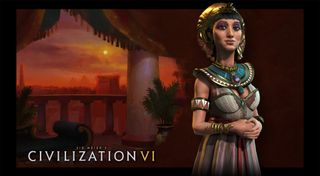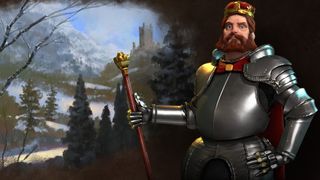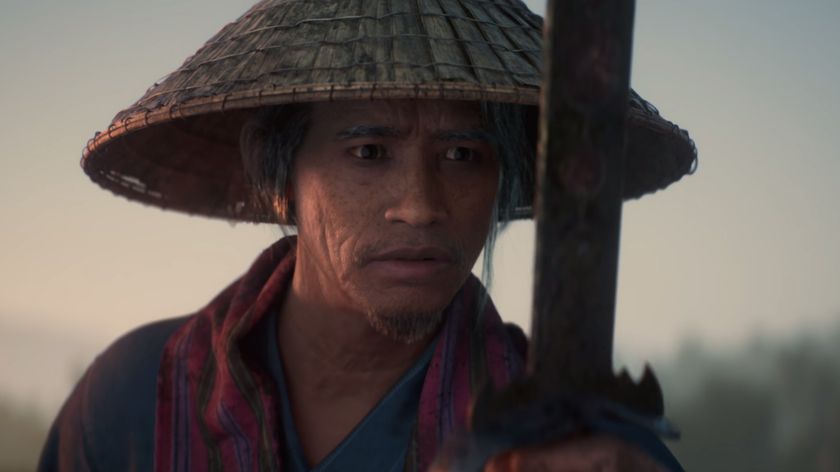Continuing the grand Civ tradition, Civilization 6 allows you to embody a number of larger than life historical figures… usually with the emphasis on 'larger than life' rather than 'historical.' However, each leader now has much more flexibility to play to different aspects of their historical realities and myths. To aid you in doing so, we’ve broken down each of the revealed leaders by what bonuses they provide, who they actually were historically, and a couple strategies that synergize with their strengths.
FRANCE / EGYPT / GERMANY • INDIA / SUMERIA / NORWAY • JAPAN / AZTECS / KONGO • BRAZIL / GREECE / SPAIN • CHINA / ARABIA / AMERICA • SCYTHIA / ROME / ENGLAND / RUSSIA
CATHERINE DE MEDICI (FRANCE)

Bonuses
- Increased Diplomatic Visibility with all civs
- Increased spy capacity in the Medieval era
- Bonus production toward Medieval, Renaissance, and Industrial era wonders
- Château district: Grants bonus culture when placed next to a wonder
- Garde Impériale: A Renaissance infantry unit with bonuses fighting on France’s home continent (reminiscent of Napoleon’s European dominance during that era)
Who was she?
A member of the illustrious, Italian Medici family (which should sound familiar to Ezio fans), Catherine was not actually French. You’re going to see a bit of a theme there with Civ 6’s leader choices. She was queen consort to King Henry II of France until his death in 1560, at which time she ruled as Queen Regent until her son, Henry III, came of age to take the throne in 1573. She was known as a patron of the arts, and is often credited with keeping the House of Valois on the French throne through a period of strong internal tensions.
Strategies
France is set up nicely to go for a cultural or a domination victory. Your best bet is probably to spam wonders in the early game to take advantage of the château’s adjacency bonuses, making use of the individual abilities of the wonders you snag early on to guide your strategy. You’ll also have large combat bonuses during the Renaissance and later when fighting on your home continent, so time your conquests appropriately if you want to go the warmonger route.
CLEOPATRA (EGYPT)

Bonuses
- Trade routes Egypt starts generate bonus gold, and incoming trade routes from other civs grant bonus gold to Egypt and bonus food to the originator
- Builds districts faster if placed next to a river (modeling how the Egyptian civilization developed in a linear corridor along the Nile)
- Sphinx improvement: Grants bonus culture if placed next to a wonder
- Maryannu Chariot Archer: A very fast early game ranged unit ideal for fighting on open terrain
Who was she?
As Catherine was not actually French, so too was Cleopatra not actually Egyptian. Her family, the Ptolemaic dynasty, were ethnic Greeks and descendants of one of the generals who helped Alexander the Great conquer Egypt generations earlier. To her credit, Cleopatra was well-liked by the Egyptian people for being the first of the Ptolemaids to learn their language and begin to embrace their culture.
Strategies
Early-game military dominance is one option, with the chariot archers being excellent harassment units when the terrain is favorable. But Cleopatra’s Egypt is really all about trade. You’ll be well-suited to most victory types by exploiting the superb income that trade routes will bring you, spending those fat stacks of gold to develop your cities and maintain a large army if needed.
FREDERICK BARBAROSSA (GERMANY)

Bonuses
The biggest gaming news, reviews and hardware deals
Keep up to date with the most important stories and the best deals, as picked by the PC Gamer team.
- One additional military policy slot regardless of government type
- Combat bonus when fighting units owned by city-states (apt, as keeping unruly city-states in line was kind of his jam)
- Can build more districts in their cities than the population would normally allow
- U-Boat: a stealthy naval unit of the atomic
- Hansa (named after a league of trade-focused city-states): an industrial district that gains adjacency bonuses from commercial tiles.
Who was he?
Barbarossa was, as you might have guessed, not the leader of Germany, at least as we know it. He was German, and held the title 'King of the Germans,' but the state he ruled, covering modern day Germany and then some, was actually known as the Holy Roman Empire. Among his notable accomplishments was reinstituting civil, secular law to put a check on the influence the Pope had enjoyed over the empire prior to his reign. Barbarossa is Italian for “red beard," which is pretty sweet.
Strategies
As ever, Germany is a civ well-suited to a domination victory. Barbarossa in particular is in an ideal position to dominate and conquer city-states, allowing you to use your military might to expand quickly without having to spend lots of production on settlers. Once the era of steam and steel rolls around, clever district placement can turn your country into the industrial powerhouse modern Germany is known as today, paving the way for future conquests or even less bloody paths to success.
Hit the next page for more leaders, or read our analysis of the biggest changes in Civ 6.
Len Hafer is a freelancer and lifelong PC gamer with a specialty in strategy, RPGs, horror, and survival games. A chance encounter with Warcraft 2: Tides of Darkness changed her life forever. Today, her favorites include the grand strategy games from Paradox Interactive like Crusader Kings and Europa Universalis, and thought-provoking, story-rich RPGs like Persona 5 and Disco Elysium. She also loves history, hiking in the mountains of Colorado, and heavy metal music.
Most Popular







